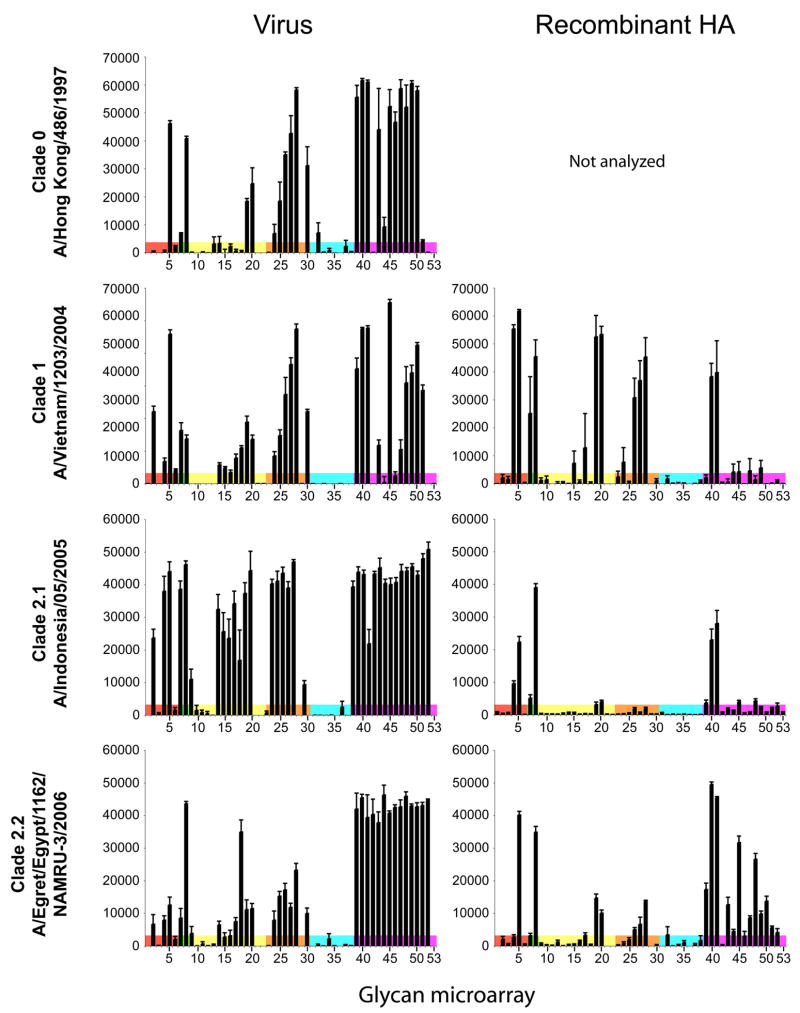Fig. 4.
Impact of LS mutations propensities of recent H5N1 isolates to bind human-type receptors. Mutations responsible for adaptation of the 1968 H3 pandemic strain (Gln226Leu, Gly228Ser) to human-type receptor specificity were introduced into H5N1 viruses by reverse genetics (column 1) and the corresponding recombinant HAs (column 2). Mutations in the clade 1 strain, A/Vietnam/1203/2004 (Row 2) and a clade 2.1 strain; A/Indonesia/05/2005 (Row 3) both show reduced avian α2-3 specificity, and acquire weak binding to α2-6 glycans, in particular to α2-6 biantennary glycans (#40, 41). Most striking is the effect of the same mutations on the clade 2.2 avian virus, A/Egret/Egypt/1162/NAMRU-3/2006 (row 4), which shows substantially reduced avian α2-3 specificity, and significant binding to a wide spectrum of α2-6 glycans. Virus and recombinant HAs were analyzed as in Figure 3.

